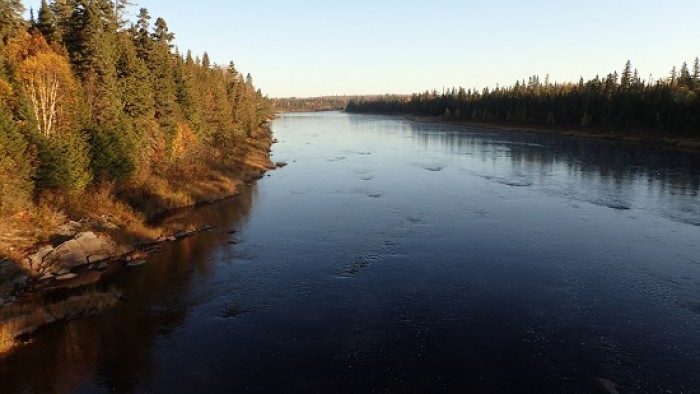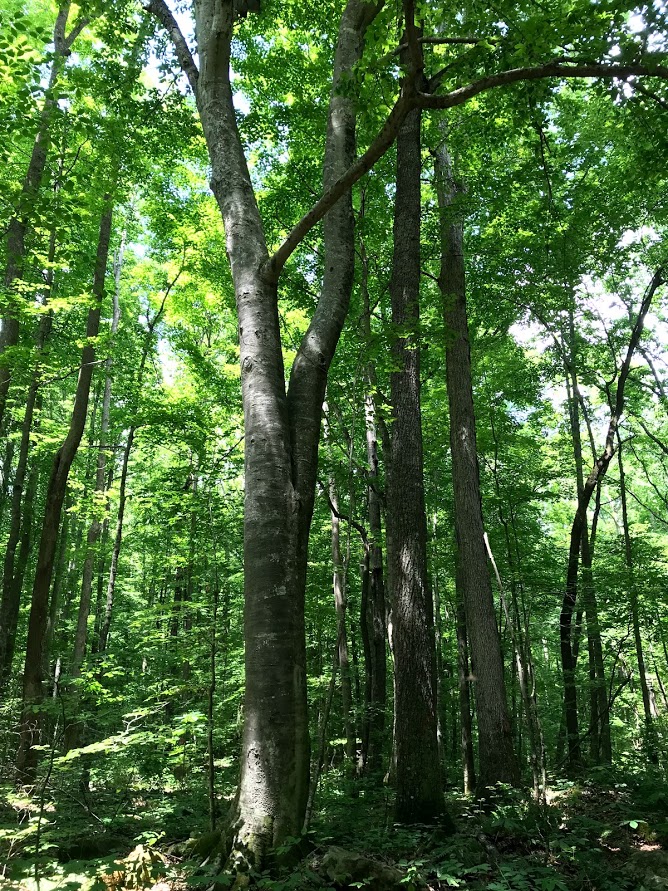Forest Carbon Offsets

This explainer is available in PDF format for non-commercial Creative Commons uses if it is shared with attribution and without remixing. We welcome your feedback. We encourage you to contact us if you decide to share it with a group.
Carbon stored in forests has become a great opportunity for conservation-minded landowners to obtain an additional stream of revenue. Additionally, a recent analysis indicated that these “natural climate solutions” could provide 37 percent of the carbon sequestration needed by 2030 to meet the commitments of the Paris Agreement.
Carbon offset markets have become financial incentives for carbon sequestration. This has provided substantial funding resources to advance conservation.
How does it work?
Forest carbon, through carbon-credit offset markets, provides an opportunity for landowners to be compensated for making long-term commitments to storing carbon on their lands.
Carbon markets
Carbon markets can be either voluntary or regulatory for GHG emitters. In a regulatory market, emitters of GHG are required to reduce their emissions and have the option to purchase allowances from other regulated emitters or buy offsets from carbon-sequestration or emissions-reduction projects.
The best-known regulatory markets in the United States are the California Air Resources Board (ARB) and the Regional Greenhouse Gas Initiative (RGGI) cap-and-trade programs.
In both regulatory markets and voluntary markets, landowner participation is always voluntary. The market distinction refers only to the buyers.
Carbon offsets
Carbon offsets must be:
- Real: tangible GHG-emissions reductions or increased carbon sequestration
- Additional: emissions reductions or carbon sequestration beyond a “business as usual” scenario and that is not a product of prior legal commitments
- Verifiable: quantifiable, monitorable and verifiable by an accredited third-party actor through a standardized system
To ensure these traits, carbon offsets need to comply with strict protocols. Offsets are also entered into registries that monitor and supervise their use, trade and retirement.
Project types
Trees and soil naturally capture carbon from the atmosphere through photosynthesis and store it as wood and other materials. Scientists can inventory the carbon that is being stored and track how it changes during management. The amount of carbon stored will greatly vary based on the type and age of the forest. (An acre of mature forest can sequester a ton or more of carbon annually.)
There are three major types of forest-carbon projects:
- Afforestation/Reforestation (A/R): Offsets are generated through carbon capture and storage from the creation or reestablishment of forests.
- Avoided Conversion (AC): Offsets are generated by avoiding the conversion of forests that otherwise face a high likelihood of tree and carbon loss through agriculture or development.
- Improved Forest Management (IFM): Offsets are generated by increasing carbon storage in forests through practices such as increasing forest age or productivity.
Any type of forest carbon project requires a long-term commitment by the landowner to maintain the carbon sequestered in the forest. Currently, entering the California ARB requires a commitment of 100 years of sustained storage while voluntary markets require 40 years.

(Credit: Mark Berry)
What are some examples of forest-carbon-conservation finance?
Downeast Lakes Land Trust owns and manages a 55,000-acre community forest in eastern Maine. The trust created and issued nearly 800,000 carbon offsets that have been sold in the regulatory market.
Sales of forest carbon offsets have played an important role in financing the land trust’s work to expand its community forest. This guarantees environmental benefits through long-term maintenance of increased timber stocking.
Tuuk Forest is a 3,120-acre family-owned forest in Tennessee. The landowner partnered with The Nature Conservancy’s Working Woodlands Program on the creation of a forest-management plan. They obtained certification for third-party forest management under the Forest Stewardship Council (FSC). They also created of an IFM carbon project for the voluntary market.
The landowners donated a conservation easement guaranteeing the property will never be developed. They will receive revenues from timber-harvest and carbon-offset sales.
Upper St John River Forest in Maine has been managed by The Nature Conservancy since 1998. The management plan includes a blend of ecological-reserve protections and sustainable-timber harvesting that has gradually increased the timber stocking on the property.
Revenues from carbon-offset sales, together with timber-harvest revenues and maple syrup production, will ensure the long-term financial viability of ecological stewardship on the property. They are expected to generate additional funding for conservation.
When is this tool appropriate?
Forest-carbon-offset projects can be a lucrative source of financing in support of conservation outcomes, but they don’t fit every situation.
Forest-carbon projects work well when:
- A landowner is willing to make a binding, long-term commitment to maintaining carbon stocking on the property beyond any existing legal requirements.
- Maintenance of a high level of carbon stocking is compatible with other management objectives applied in the property. These may include goals related to product harvests, wildlife habitat, watershed protection, or cultural resources.
- The forest property already has a high level of timber stocking relative to what is typical in its region – or has moderate stocking but substantial growth potential.
- The forest property is large enough to achieve an economy of scale. Because carbon projects require rigorous inventory, verification and monitoring, the expense of a carbon project often prevents smaller landowners from participating in the forest carbon markets. The size required depends on many factors. Typically, project areas are at least several thousand acres. However, there are efforts underway to aggregate smaller-scale projects to make it economically feasible.
These factors have contributed to early participation in forest carbon markets by landowners such as conservation groups and Native American tribes that have an inherent interest in long-term forest stewardship.
As markets have become better known and more robust, investment-oriented forest owners are increasingly using forest carbon markets as part of their revenue strategies.
(Credit: Maine Forest Service)
What are the risks and opportunities?
Risks associated with participation in forest-carbon-offset markets are centered on financial uncertainty. This risk is a product of evolving regulations that affect carbon offset prices. Market participants need to carefully evaluate these risks and their exposure to them. The specifics depend on the structure of their projects and agreements with partners.
Many landowners seeking to create forest-carbon projects enter partnerships with forest-carbon-project “developers” who have specific expertise and can help to reduce risk or cover the upfront costs in exchange for a fee or a portion of offset revenues.
However, carbon markets have become an exciting opportunity to further private forest stewardship. With carbon credit prices ranging from 10 to 15 dollars a ton, offsets have the potential to provide landowners with an important stream of revenue.
This flow of financing can fund conservation activities while paying for an important ecosystem service. That is why these markets are becoming an increasingly sought-after conservation-finance option worldwide.
Leveraged by the current international political agenda, this could be the first widely-used payment-for-ecosystem-services method. This could open the door to other ecosystem services being broadly recognized and financially valued.
Where can organizations find more resources?
- Climate Action Reserve and Protocol
- Verra
- California Air Resources Board (ARB)
- New England Conservation Pathways
Note: Our expert coauthors volunteer their time to assist our writers with these pieces.
Join our LinkedIn group to discuss this article. You may also email the authors directly using our contact form.
